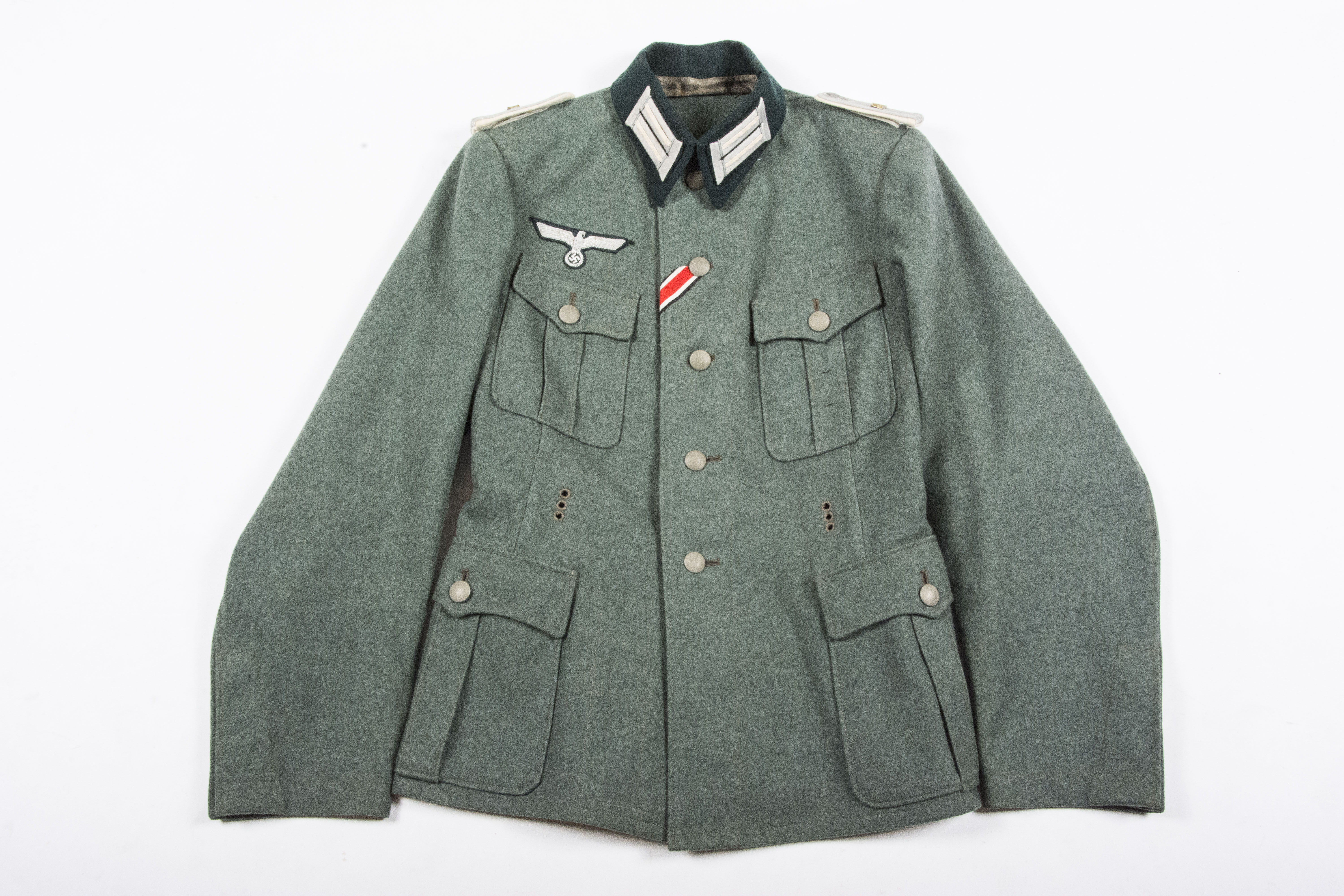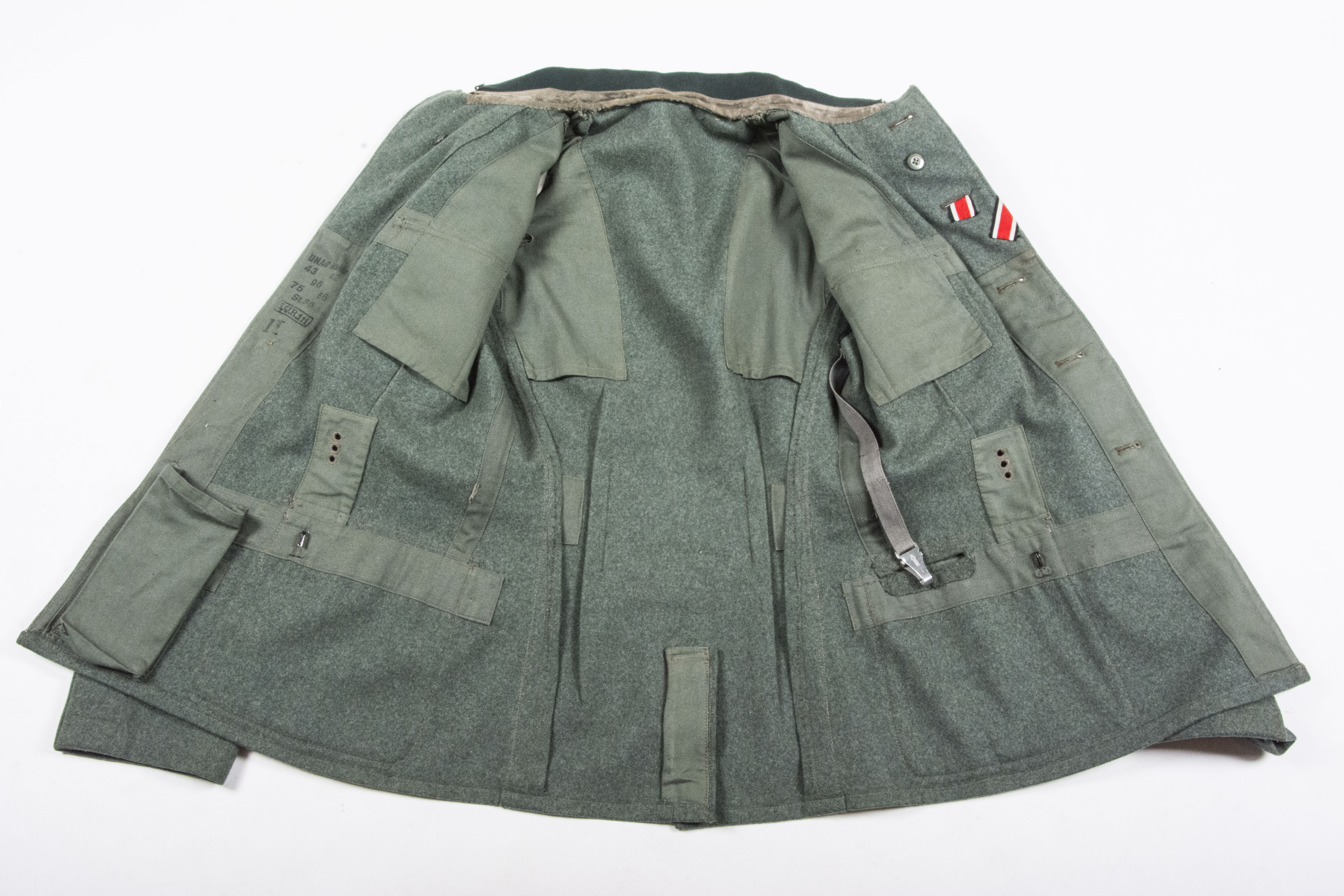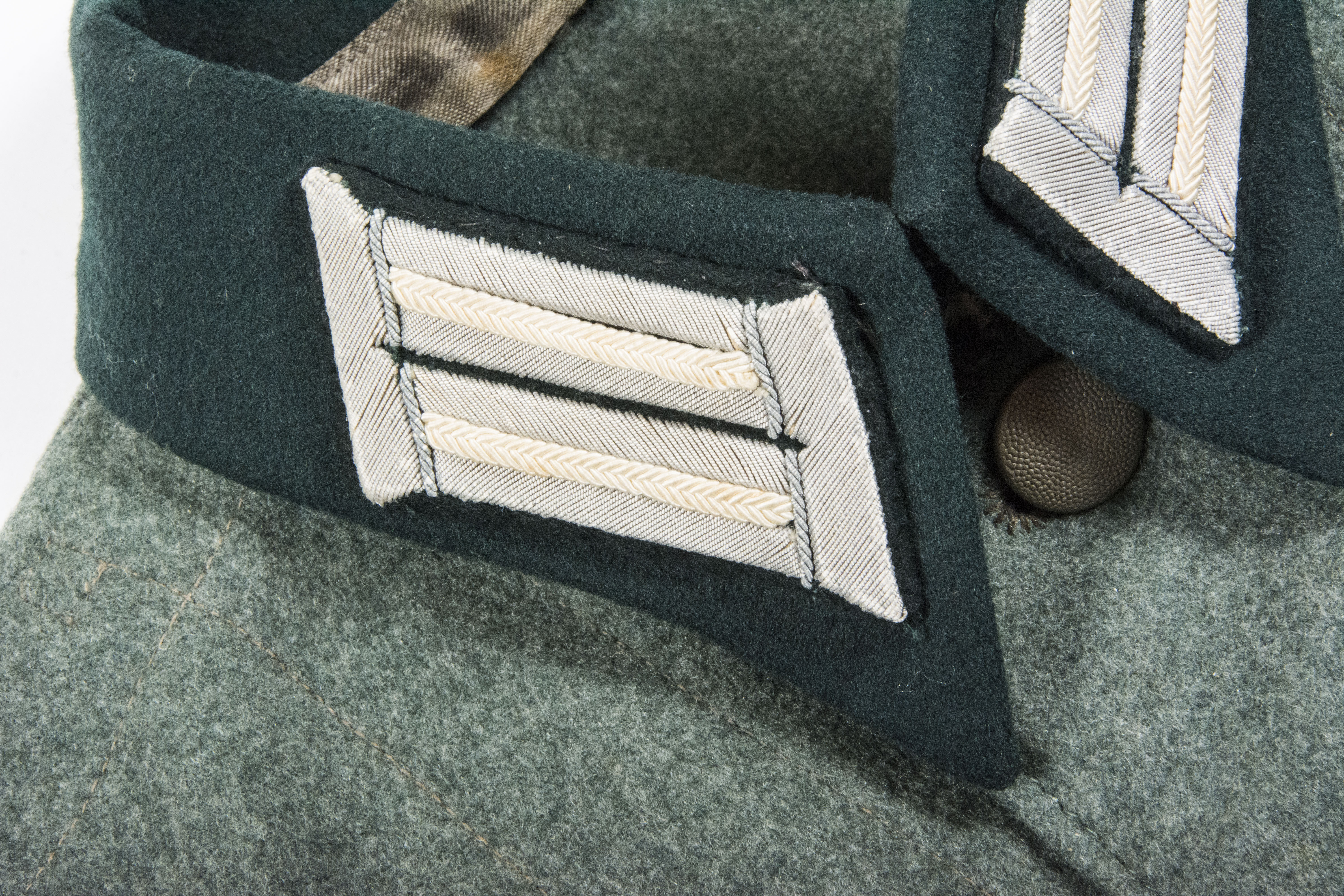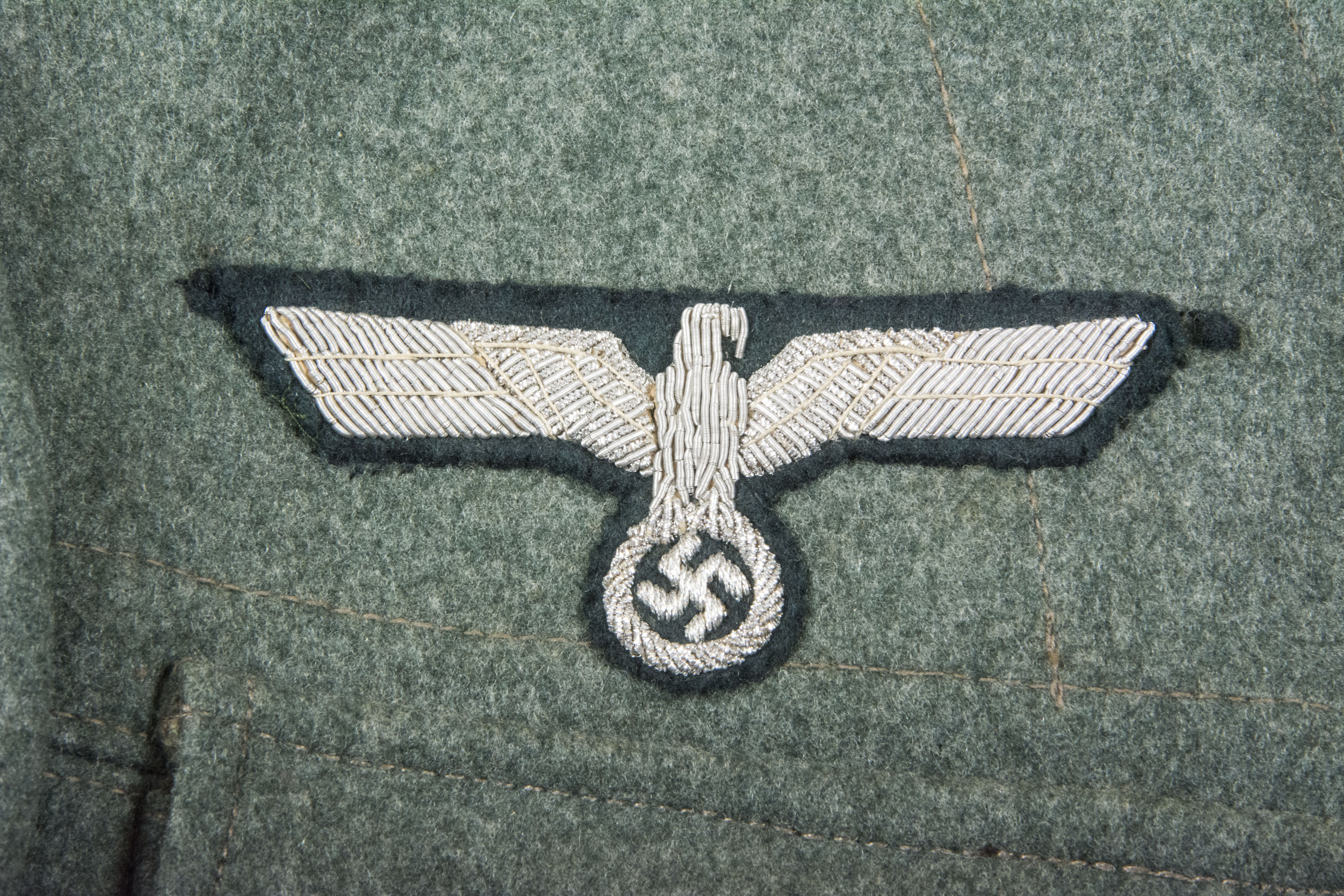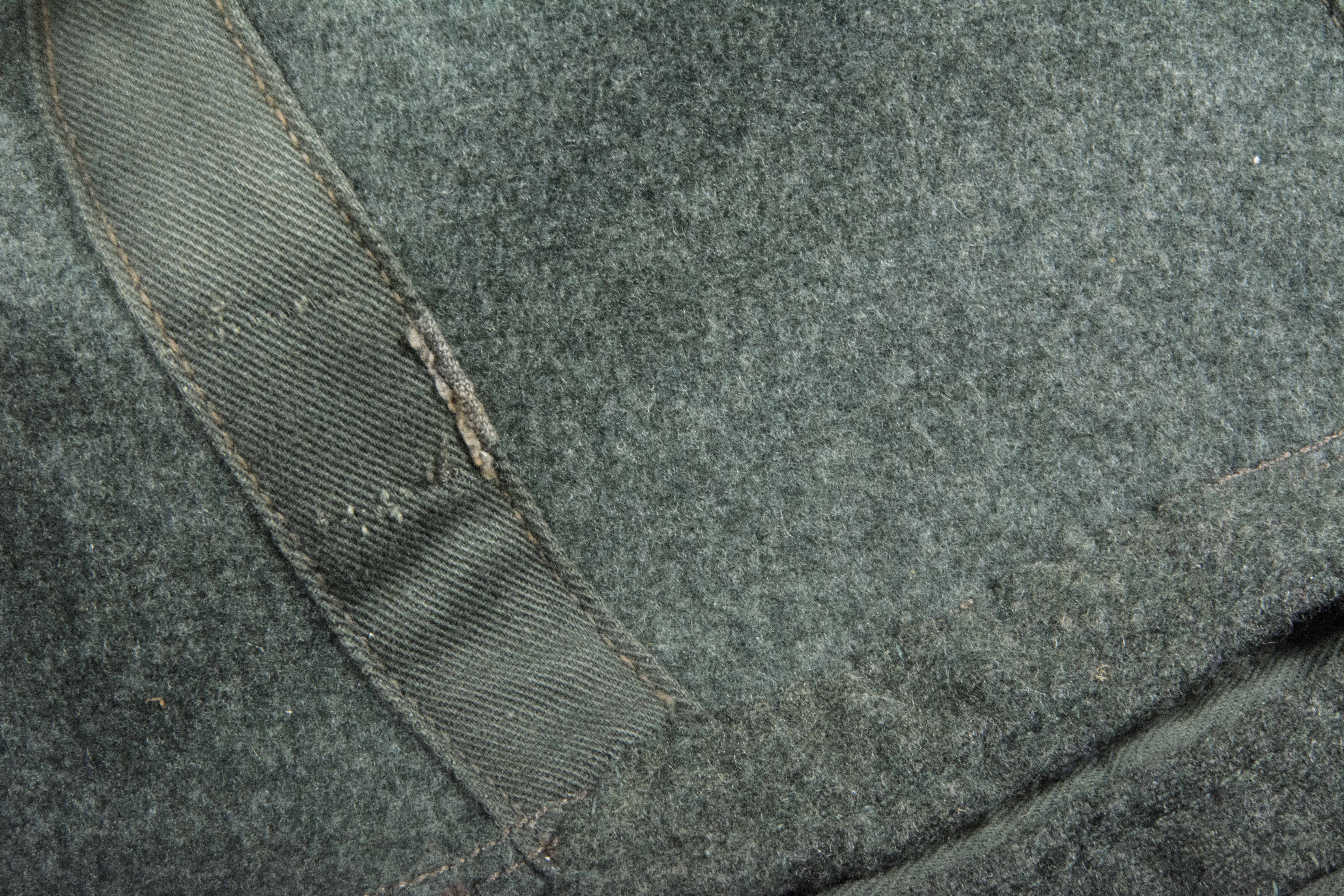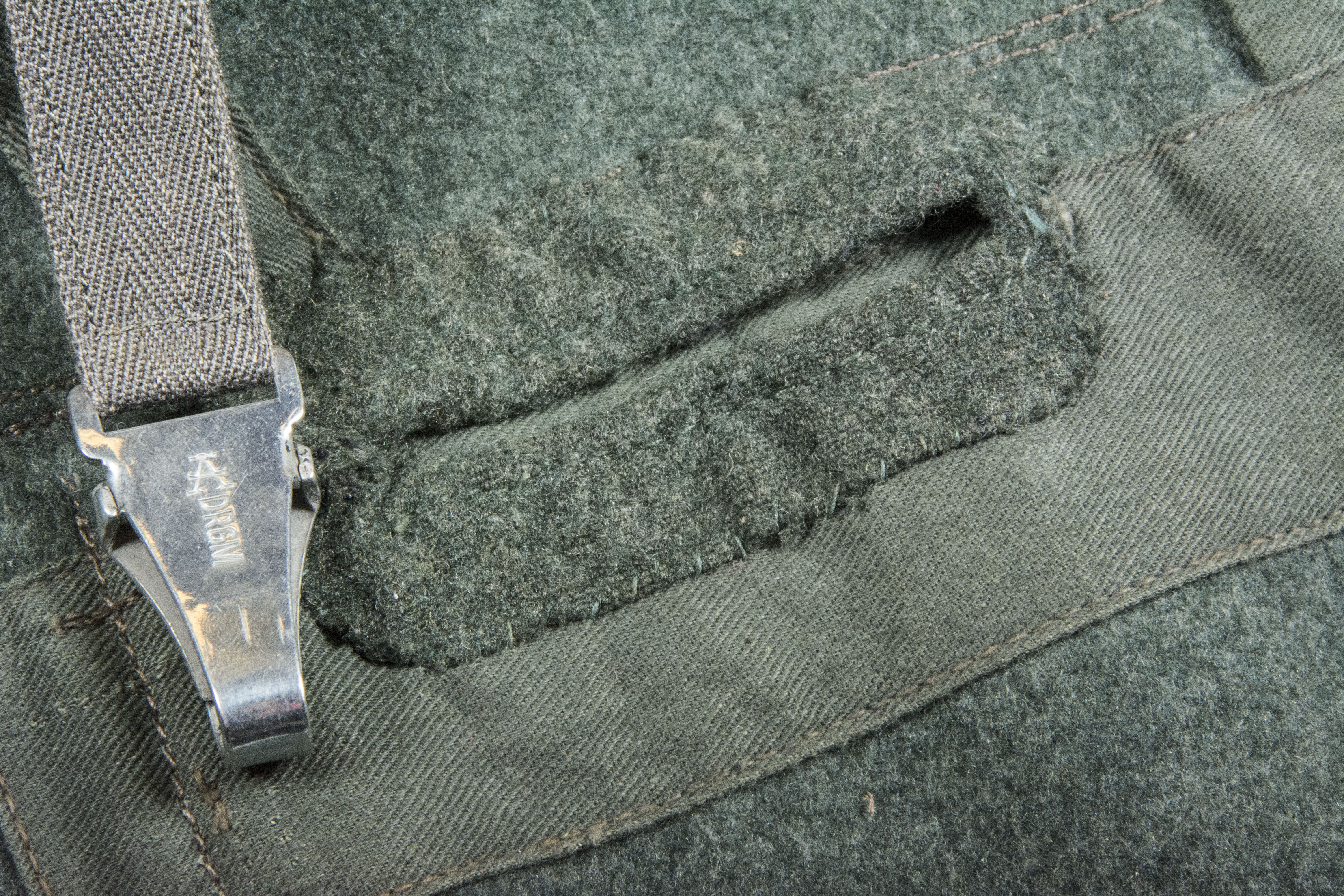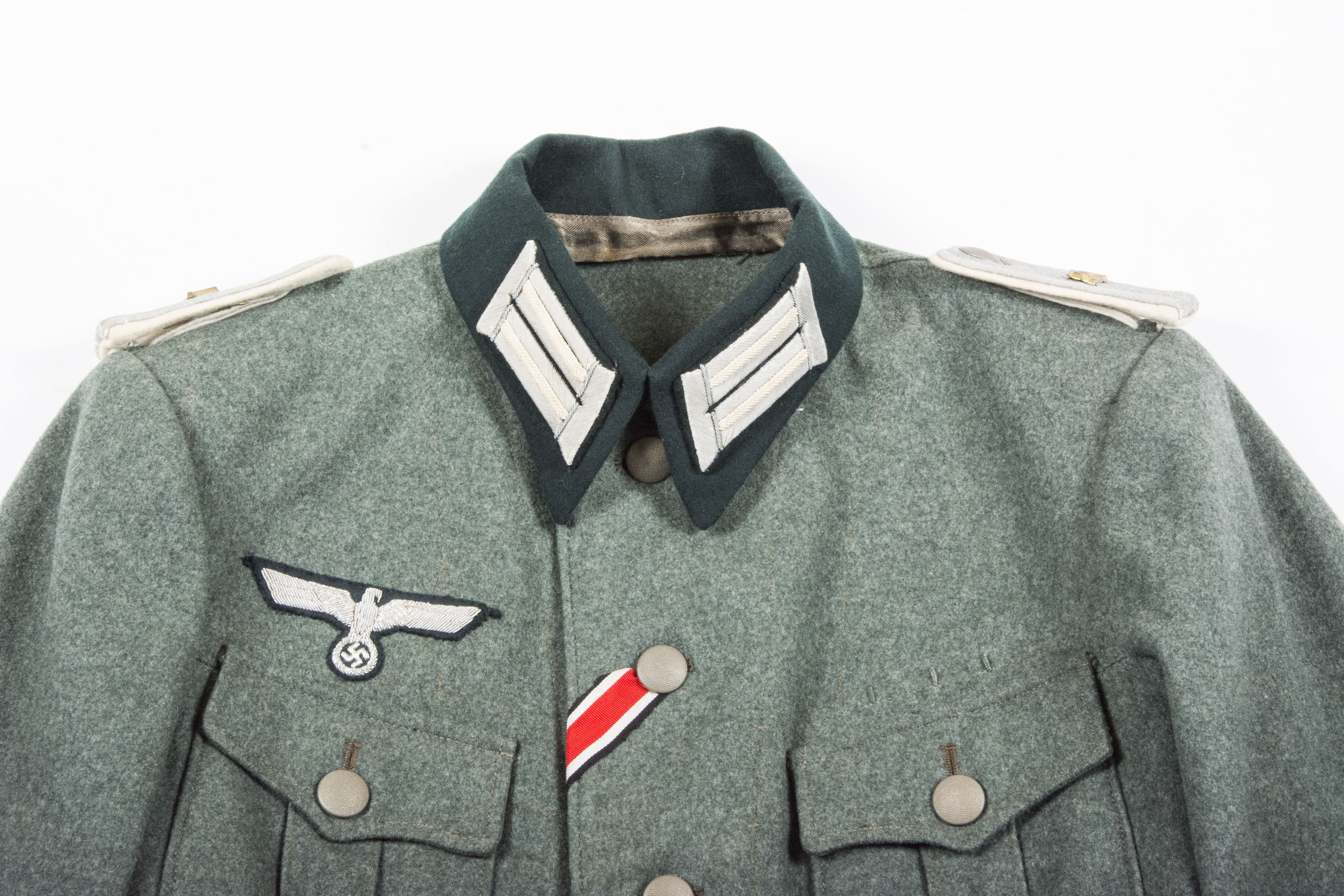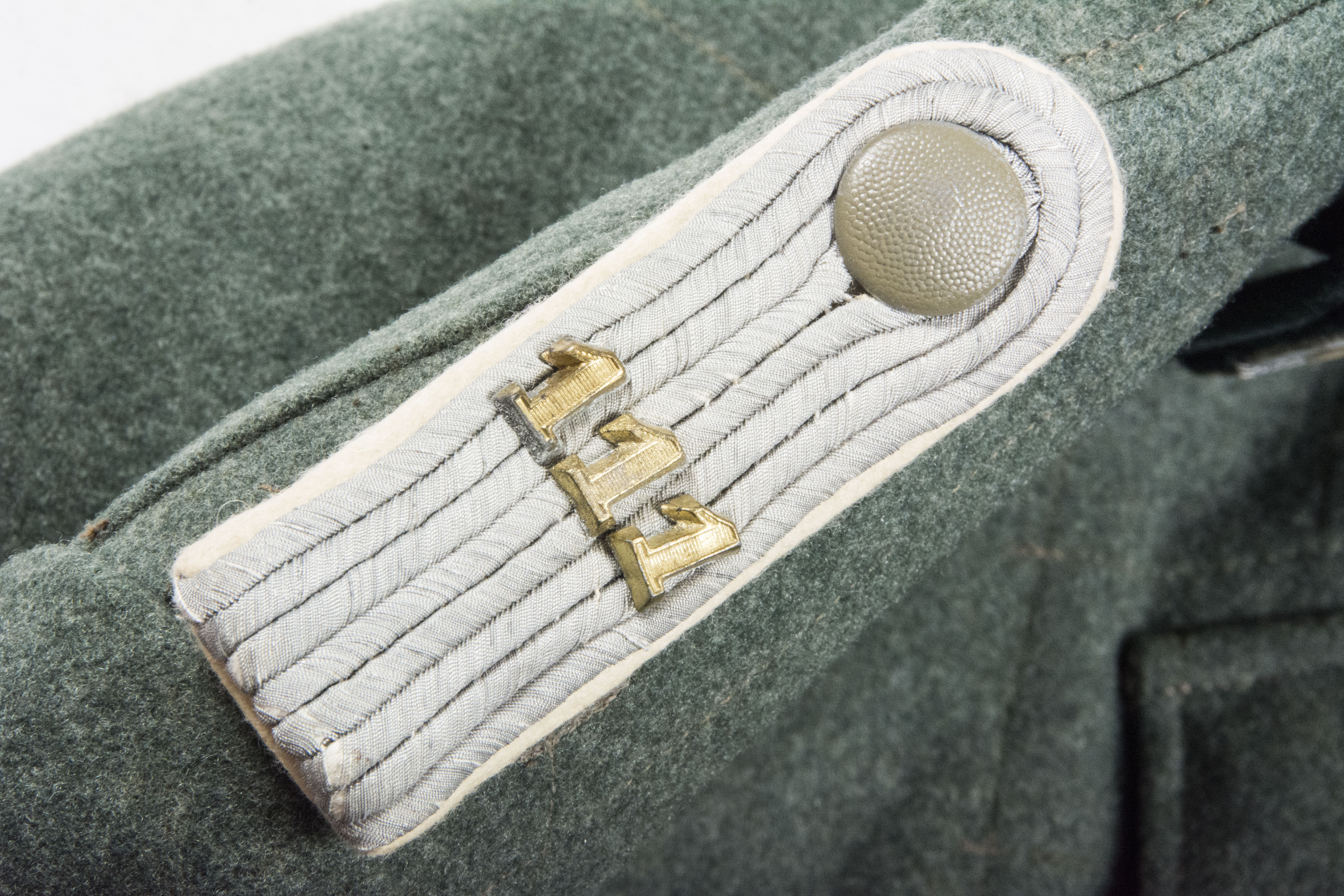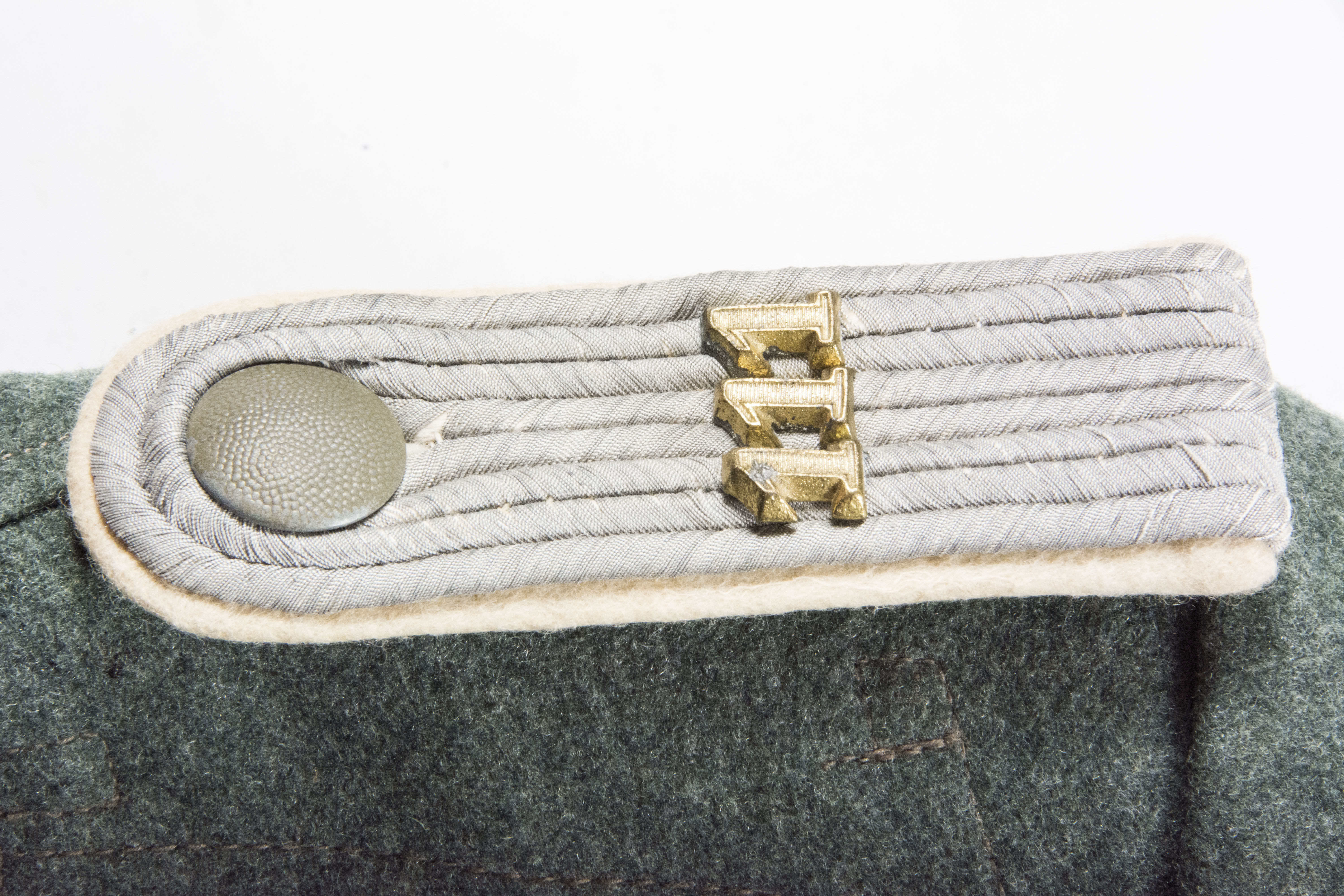Stunning converted EM M34 field blouse for a Leutnant in 5./IR.111 Holland/Belgium/France
Stunning untouched Heer M34 tunic with full wartime sewn insignia for a Leutnant der Infanterie Regiment 111 – 35. Infanteriedivision. The garment is in very good condition retaining most if not all of the nap in the wool. The garment is a period converted EM tunic which most probably makes this a field tunic. The M34 model can be recognized with the open back and the the waist ties. The garment is nicely unit marked to Infanterie Regiment 111 inside the garment – matching with the shoulder boards. The garment is a perfect garment for a 1940 display sporting shoulder boards and markings for Infanterie Regiment 111 – a unit which fought hard in the 1940 campaign in the south of the Netherlands. Very hard to find a historic tunic like this, it would be a very nice base for a combat mannequin! Please find below a short description of the 1940 battles and places where this tunic most probably went in 1940.
On May 10 1940, at 05:35 hours IR 111 via Merkstein – Herzogenrath – Noppenberg – Wilhelm Schacht – Grube Nordstern ahead crossed the Dutch border. The border fortifications at Kerkrade, Heerlen and Valkenburg were broken against light resistance only. At 06:10 Kerkrade was in German hands and the railways facilities there were taken without damages. Both advance guards proceeded forwards. At 09:15 hours the first great obstacle, the Juliana Canal, was reached but all the bridges were already blown there. At 11:00 hours with strong artillery support, both frontline regiments got across it. Leaving Maastricht and Lanaeken behind the IR 111 reached the Petersheimer wood’s easthern edge with its frontline battalions. The wood was free of enemies so several recce patrols were sent towards the Albert Canal. By midnight both infantry regiments (IR 111 and IR 34) were deployed along it. On May 11 1940, during afternoon hours and after hard fighting, the division’s troops could get across the Albert Canal; hence within 48 hours the 35 ID had overcame all the water’s obstacles (four) laying ahead its march routes and the first attack’s objective, the road Bilsen – Maartenslinde, was reached.
The whole day the enemy carried out aerial raids, british, french and belgian planes, all of them were rejected by our own Flak (antiaircraft guns). This fact delayed the heavy guns’ advance hampering its march towards the front. On May 12 1940, the motorized elements resumed its march at 05:00 hours getting across the Juliana Canal, the Meuse and the Meuse Canal.
Along the road they found also the infantry columns and its vehicles, up to 2/3 of them were composed of belgian and dutch cars, besides there were little charts and horses also. The “landsers” carried their machineguns, ammunitions boxes and assault tools even in baby carriages. Speaking on their mood and discipline, they marched with unfasten collars and rolled up sleeves, looking for any relief for the burning sun and the dust.
The night from 14 to 15 may 1940 went quietly; on May 15 1940 at 09:00 hours one panzer division (3 Pz) supported by one aerial corps launched an assault against the Dyle position (Dylestellung). The sky was full of stukas, Do-17 and fighters. Around nightfall came the orders for the next day.
On May 16 1940, the movement proceeded with the Dyle crossing. At 08:00 hours resumed its march having the task of covering the division’s right flank. At 11:00 hours St. martin was reached without enemy actions. After leaving behind the Dyle’s battlefield the detachment reached Baissy-Thy. Tank alarm!. Three enemy tanks were put out of action by antitanks cannons but one of the crews was either killed or wounded in turn; one of the light armored vehicle (panzerspähwagen) caught fire also.
The recce patrols sent ahead reported around 60 tanks patrolling on the road to Nivelles and they stood there (Banterlez) in the evening. Meanwhile as the IR 111 was approaching Chastre could see the French troops’ withdrawal so according division’s orders strong recce patrols were sent against Ferme del Croix and Ferme Sartage; the IR 34 followed near the IR 111.
On may 20 1940, the mission was to move forward to the river Escaut in order to established a bridgehead at Antoing – Tournai. The AA 35 had reached the river by Ramecroix. In that town the Germans could see a destroyed English column, parts of vehicles mixed with human remains were littered all over the ground. The Detachment got heavy artillery fire and should retreat towards Pipaix.
That very day the Schelde crossing began; it was the hardest day of the whole the campaign. The IR 109 crossed by Antoing and the IR 111 did the same by Peronnes; both frontline battalions could establish two little bridgeheads against English elite troops. Due to strong counterattacks, supported by tanks and artillery fire, the bridgeheads were lost; nevertheless, the IR 109 could maintain one little strong hold on the far river bank.
On May 21 1940, the AA remained at Pipaix while the IR 111 could get across the river Escaut establishing a bridgehead. The Division took up defensive positions and also stood fast next day (22 May).
On May 23 1940, the order to carry out the reconnaissance towards Fontenay. As a result, it was known that the enemy had already retreated from the water line leaving its positions behind. A serviceable shuttle was found at Fontenay. The large grey columns proceeded slowly ahead. That very afternoon, the 35 ID had reached the French-Belgian border line.
On May 24 1940, at 06:00 hours the unit proceeded its march to Antoing, where the Abteilung crossed the Escaut. The British troops followed its withdrawal through Tournai heading to Templeuves. At every village and crossroads, the Germans found obstacles and blocking positions.
On May 25 1940, the cyclist squadron (radfahr-schwadron) relieved the infantry and by dawn that infantry regiment had proceeded its march as a whole. A hard task: to ward a two kilometer frontline, in its front Scottish troops. The officers were uneasy, however the day went quite calm, in spite of during the night there were alarms and own artillery fire.
On May 26 1940, at dawn antitank alarm; a Recce Patrol of five men was detached to deal with, but in reaching the spot, reported it was an old out of service truck. At noon and evening, heavy aerial attacks against Lille and Roubaix. Around 22:00 the 253 ID came serving as replacements.
A stunning untouched Heer Infanterie Leutnant in Infanterie Regiment 111 field blouse that would incredibly hard to upgrade!
Out of stock



